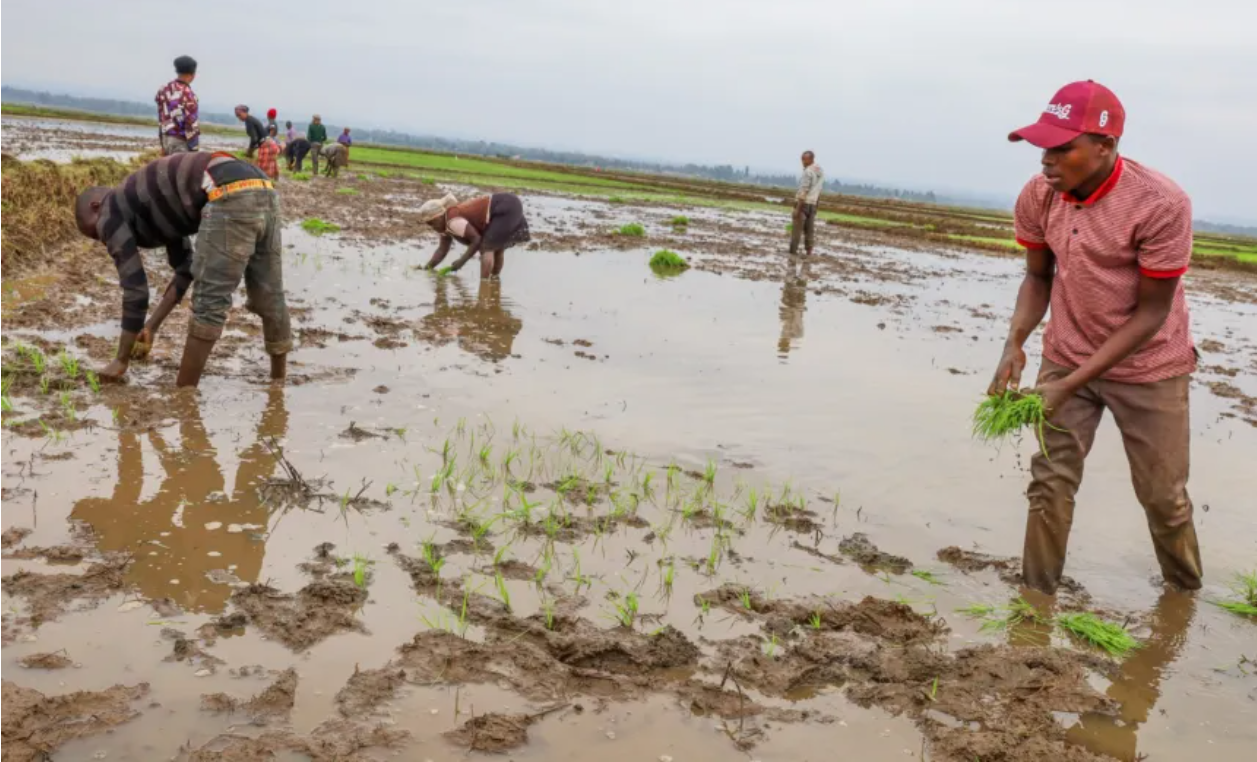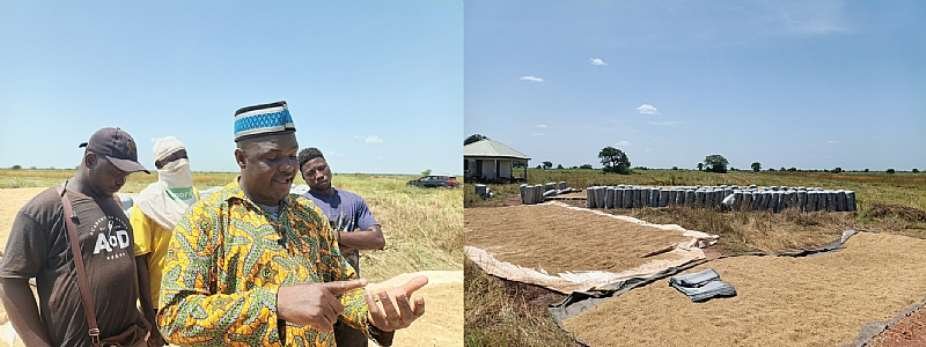Tags
Are USDA’s acreage and stocks numbers too high?
Flooding in NE Arkansas may shift the rice outlook downward.
Forrest Laws

At a Glance
- USDA may have overestimated acres.
- 2024-25 rice carryover number, according to USDA, will be up 16 million hundredweight.
- Severe flooding may impact expected rice acres.
Is USDA overstating the size of the 2025 U.S. rice crop by not taking into account the severe flooding in northeast Arkansas, leading to a depressed outlook for U.S. rice prices?
U.S. rice merchants recently completed the sale of another 44,000 metric tons of U.S. long grain rice to Iraq, raising the total contracted for delivery in 2025 to 220,000 metric tons. (The rice is expected to be shipped this fall.)
That would normally be enough to provide some lift to prices, but USDA’s forecast of 2.24 million planted acres of U.S. rice this spring – about 275,000 acres more than some estimates – is hanging over the market.
“There has been growing frustration in the market over delays in USDA reporting, and the impact this is having on pricing is substantial,” the U.S. Rice Producers Association said in its May 23 weekly newsletter. “This year’s planted acreage estimates appear to be significantly overstated, placing heavy pressure on prices for paddy rice.”
There is also the possibility the USDA World Agricultural Outlook Board is overstating the current level of U.S. rice stocks, according to market analysts who closely follow the rice situation and outlook.
“The March 1 USDA Stocks Report said we had 2 million hundredweight more rice on hand that we had at this time last year,” said Dennis DeLaughter, who farmed for 40 years before becoming a fulltime rice marketing advisor. “Yet the 2024-25 rice carryover number, according to USDA, will be up 16 million hundredweight.”
Acreage estimates
In its newsletter, the USRPA compared USDA planted acreage estimates to a survey it conducted in the six major rice-producing states. The biggest difference was in Arkansas where USDA’s World Agricultural Supply and Demand Estimates put acreage at 1.32 million or 240,000 acres higher than USRPA’s survey results of 1.08 million acres.
The differences in other states are less pronounced, ranging from 20,000 less acres in Missouri to 5,000 fewer acres in Mississippi. The total difference in the state estimates could result in up to 24 million metric tons less rice, according to USRPA.
“This disconnect is materially affecting growers still trying to sell and mills attempting to buy rice and manage inventory,” the USRPA said. “While the true numbers will eventually surface, for many, it may be too late to influence favorable pricing.”
A spokesman for USDA’s National Agricultural Statistics Service said the latest National Planting Intentions Report acreage numbers are taken from surveys of growers in early March, It is currently surveying growers for its end of June Planted Acreage Report. The World Agricultural Outlook Board had not responded to a request for comments at press time.
DeLaughter noted that the most recent report from the University of Arkansas System Division of Agriculture indicates any hopes Arkansas farmers had for getting significantly more rice acres planted in the area north of Interstate 40 this spring appear to be fading.
Even at night
The report, written by Jarrod Hardke, Scott Stiles and Bob Scott of the University of Arkansas Cooperative Extension Service, referenced Forrest Gump’s soliloquy about it raining for four months with the rain coming down in every possible way and “even at night.”
“And, just like that, the remainder of the 2025 rice planting was wrapped up,” they said. “There will be some scratched in late. But last weekend’s rains, very heavy in some areas, washed away remaining glimmers of hope for many to continue with remaining rice planting efforts. In some areas, river levels surged back up while, in others, it simply made a muddy mess that isn’t drying very quickly.
Hardke said he had been pointing toward an Arkansas crop of 1.2 million acres, as recently as a week before the report was published on May 30. “However, the heavy and widespread rains since then, combined with the economic climate and lack of drying conditions make that number appear too high. Let’s call it between 1.1 million and 1.2 million total acres of rice for Arkansas.”
The USRPA said the acreage shortfall its industry contacts are pointing to in Arkansas could account for at least 20 million fewer hundredweight of rice from the 2025 harvest than USDA’s forecast of 1.32 million acres of rice could produce.
The recently announced 44,000-metric ton sale of milled rice to Iraq could also reduce the carryover prospects since it presumably wasn’t factored into the USDA World Agricultural Outlook Board’s forecast.
“So, all of a sudden, the carryover number is not as high as they say it is, and, if you lose 200,000 acres or more of planted acres in Arkansas that’s at least 15 million hundredweight of rice,” said DeLaughter. “And, if you add those numbers together you go from a carryover of 37 million hundredweight to 20 to 21 million hundredweight.
“I’m not saying that’s what will happen because obviously demand changes with price action and so on. What I am saying is that USDA has put out a carryover number that doesn’t appear to be correct, and it’s having an effect on pricing.”
USDA overstatement
He believes part of USDA’s overstating the carryover figures for the 2024-25 marketing year could be due to the low milling quality of the 2024 rice crop in Arkansas and the other Midsouth rice growing states.
“I don’t know if they’re not calculating how much more rice they’ve had to mill because of the poor grades in Arkansas last year,” he said. “I mean, in that perfect storm, we had bad grades in Texas, bad grades in Arkansas, in Louisiana and in Mississippi because of the hurricanes last season and other factors. “Missouri may have had better grades, but all of this low milling yield requires you grind through a lot of rice to produce the amount you need to satisfy your customers. Iraq, for example, doesn’t want a shipment with a lot of broken kernels.”
A 2024-25 carryover of 21 million hundredweight would be significantly different than one of 37 million, and that’s being reflected in cash prices below $13 per hundredweight and lower futures prices on the Chicago Mercantile Exchange.
“Let’s say USDA is half wrong on the carryover,” said DeLaughter, the keynote speaker for the recent Rice Marketing and Technology Conference in Miami. “That’s 5 million hundredweight, and if we have 15 million fewer hundredweight on the supply side, that has a big impact on the price outlook.
“The commodity funds were short more than 6,000 contracts in Chicago a week ago,” he said on June 3. “Now they’re short about 5,400, and they may go to 5,000, but still, that is a huge position. It’s going to be interesting to see how this starts to play out when they begin to realize you have a stocks report number that is wrong.”
https://www.farmprogress.com/rice/are-usda-s-acreage-and-stocks-numbers-too-high-Published Date: June 23, 2025






